What is sage?
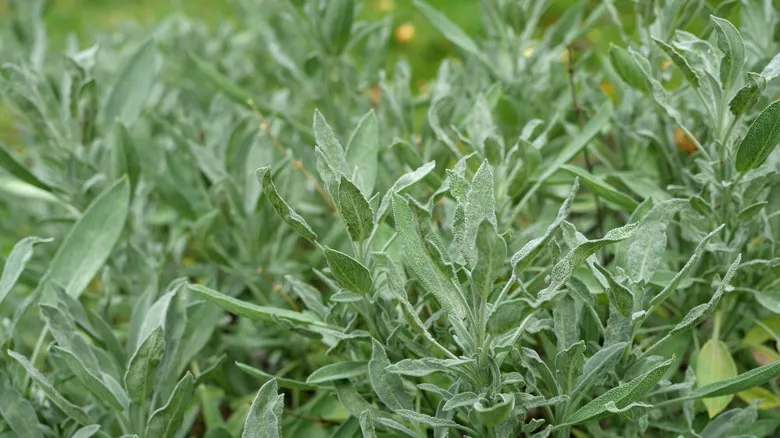
Sage (Salvia officinalis) is a fragrant herb belonging to the Lamiaceae family, which includes mint and other aromatic plants. This herb is indigenous to the Mediterranean region, thriving in sunny environments along coastlines, hills, and mountains. One of sage's most distinctive features is its green-gray leaves, complemented by a soft texture and lovely bluish-purple flowers that enhance gardens throughout spring and summer. Its delightful aroma attracts various pollinators, making it a cherished addition to any garden, even for those who may not enjoy cooking.
Commonly referred to as culinary, garden, kitchen, or true sage, its name can vary by region and brand. Due to its versatility—suitable for use in sauces, stews, pasta, and even desserts—numerous varieties can be found in grocery stores and farmers' markets, providing an opportunity to inspire creativity in the kitchen.
A brief history of sage cultivation and use
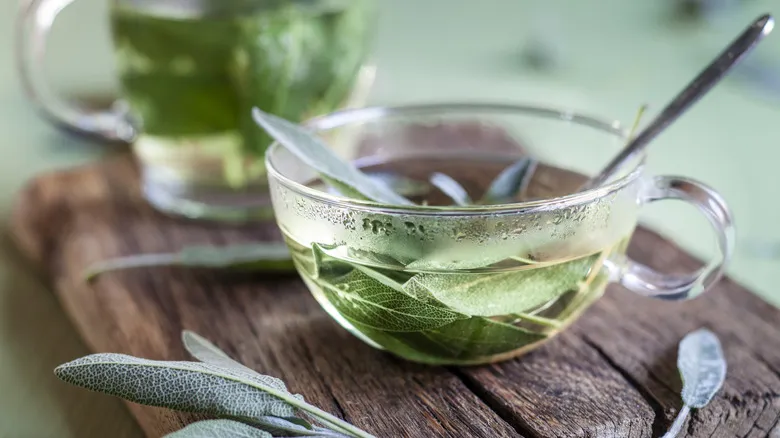
While pinpointing the exact origins of plants with ancient backgrounds can be challenging, sage is thought to originate from the Balkan Peninsula. For thousands of years, various cultures have utilized sage for both medicinal and culinary purposes, with its medicinal applications being more prevalent among ancient civilizations such as the Greeks, Romans, Chinese, and Arabs.
Throughout history, sage has been attributed with an impressive range of benefits. During the Renaissance, herbalists claimed that sage could enhance cognitive function, sharpen the senses and memory, alleviate palsy, and fortify muscles. Arabic physicians even went so far as to suggest that sage possessed properties that could grant immortality. If only that were true!
By the end of the Middle Ages, sage had gained significant popularity as a culinary ingredient in Europe. Thomas Jefferson, known for his passion for gardening, cultivated sage at his expansive Virginia estate, Monticello. From that point on, its reputation and utility continued to grow.
Sage in global cuisines
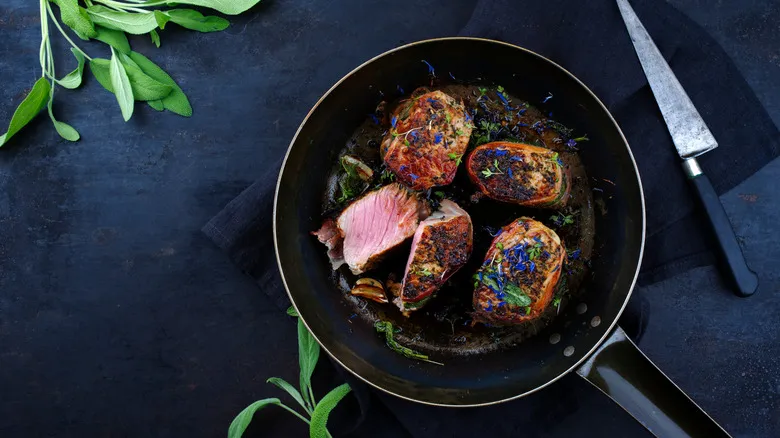
While many Americans incorporate sage into their cooking traditions inherited from European ancestors, there are also numerous chefs in the U.S. who embrace culinary practices influenced by African, Latin, and Asian cultures. For example, Somali cuisine prominently features a spice blend that includes cumin, cloves, cardamom, cinnamon, and, of course, sage, providing a refreshing contrast to the other spices. In various Asian dishes, sage is often combined with garlic, ginger, and lemongrass to enhance the flavors of meat or tofu.
Sage is also a beloved ingredient in beans, sausages, and vegetables, which accounts for its role in cuisines like Mexican. Renowned for its hearty fare, Mexico favors bold flavors that can complement the rich umami of meats and starches that form the foundation of its diet.
And then there's Europe. In the United Kingdom, artisans incorporate sage juice or chopped sage leaves into cheese curd to produce Sage Derby cheese, a well-known delicacy from the region. Italians also have a fondness for sage, using it in dishes like saltimbocca, where it is paired with prosciutto and veal cutlets before frying the entire creation.
The flavor of sage

Sage boasts a rich flavor profile with a fresh, peppery essence. It is often described with terms like piney, earthy, minty, and citrusy, which can differ based on the variety of sage. When used on its own or fresh, sage has a robust herbal quality, making it an excellent choice for tea. However, caution is advised in cooking, as it can easily dominate a dish.
The scent of sage is quite potent, with some individuals likening it to camphor, a compound known for its anti-inflammatory and pain-relieving properties, commonly found in lotions and creams. While this comparison may seem unappealing, when used in moderation, sage contributes a subtle, spicy, and slightly warming aroma and flavor to culinary creations. It can be a wonderful addition when used appropriately, but due to its intensity, it's wise to follow specific recipes before venturing into personal experimentation.
Common varieties of sage

What you define as "sage" can vary based on whether you consider its genus, Salvia, which encompasses over 900 species found in various parts of the world, or if you focus solely on common sage and its cultivars. To truly enhance your culinary experience with sage, it's beneficial to explore beyond the typical variety and discover unique options. Depending on your culinary objectives, you might select different types based on their flavors, colors, flowers, blooming periods, and adaptability to different soils and climates. Even if you're a cook without a green thumb, you can still find interesting varieties of sage at grocery stores, farmers' markets, or through farm shares, though your choices may be limited to the most popular types.
Some common sage varieties you might consider for cooking include pineapple sage (Salvia elegans), known for its striking red flowers that can be used to brew tea or as a garnish for soups and salads. Clary sage (Salvia sclarea) features large leaves that differ significantly from the common variety, with edible flowers and leaves that are perfect for drying and making sachets. Grapefruit sage (Salvia gesneriiflora) offers leaves with a flavor profile similar to traditional kitchen sage, but its enormous, sweet flowers truly steal the spotlight, adding a delightful burst of nectar to your dishes.
Available forms of sage
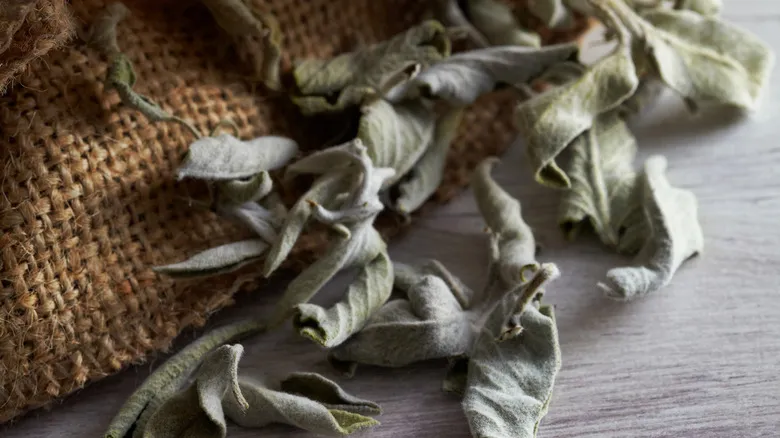
The two primary varieties of sage are fresh and dried. Fresh sage is typically found at your local supermarket alongside other herbs, and occasionally, you may come across a live plant. You can purchase fresh sage individually or as part of a fresh herb bundle. A poultry blend, which often contains sage, thyme, and other herbs, is designed to be stuffed into the cavity of a chicken, duck, goose, or turkey, imparting aromatic flavors to the meat during cooking. Both fresh and dried sage are excellent options for incorporating this herb into your dishes (though sage is also a key ingredient in many dried poultry seasonings).
Dried sage can be found in the spice section, usually in a crumbled form, although whole leaves are available online. Purchasing dried sage is the simplest and most convenient way to ensure you always have it on hand. Most grocery stores stock at least one brand of dried sage, often more. If you can't find a suitable option locally, affordable jars of dried sage can easily be ordered online.
Selecting herbs may feel overwhelming at first, especially if you're not accustomed to choosing fresh varieties, which many beginner cooks are not. However, there are some straightforward guidelines for selecting fresh herbs. Look for sage (and other herbs) with vibrant, unblemished leaves, straight stems, and a strong, fresh aroma. For dried herbs, opt for those that still have good color (steer clear of anything gray) and are within their sell-by date.
Common uses for sage in the kitchen

Sage is a versatile herb in the kitchen, serving as a flavorful base for soups, an aromatic addition to roasted vegetables, and a seasoning for a wide range of dishes. It pairs well with chicken, fish, and various fatty meats. To incorporate more sage into your daily meals, consider sprinkling it over salads or mixing it into butter. Due to its robust flavor, it’s best suited for rich and hearty ingredients like meat, dairy, and pasta.
Additionally, sage's edible flowers make for an attractive garnish and can even be fried for a tasty appetizer. You can also find sage leaves and blossoms in baked treats, such as lemon sage cake, sage cookies with sweet icing, or sage-infused ice cream. The vibrant flowers of pineapple sage are particularly lovely as a decorative touch on cakes and other desserts.
While essential oils should not be used in cooking due to the risks of overconsumption, you can create a milder and delicious alternative by infusing sage leaves in olive oil. To infuse oil at home, use a dispenser with a spout for easy pouring into your cooking pots and pans. If you anticipate using sage infrequently, opt for a cruet with a cork stopper to prevent oxidation, which can lead to undesirable changes in the oil's appearance, aroma, and flavor. A proper seal will help slow down this process and extend the oil's freshness.
Growing, collecting, and drying sage
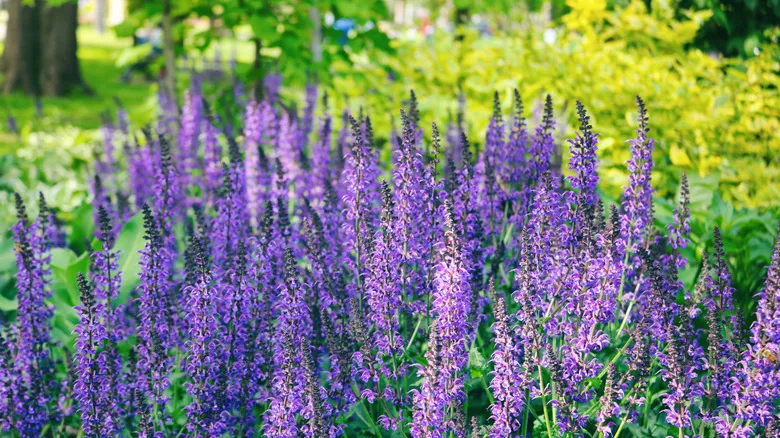
Sage thrives as a garden plant, provided it receives ample sunlight and has well-draining soil. While many home gardeners cultivate it for culinary purposes, it also serves as a stunning ornamental, particularly in summer when it showcases tall flower spikes that attract bees and butterflies. If you lack a yard, sage can be easily grown in pots outdoors. You can purchase sage seeds individually or, if you're feeling ambitious, opt for a selection of herb seeds. For those without outdoor space, an indoor herb garden starter kit is a great alternative. Just ensure you have a sunny windowsill for indoor growth, or use a grow light if necessary.
If you decide to grow sage at home, you might want to harvest and dry it yourself. This straightforward process involves cutting fresh, healthy stems (preferably before they bloom) and hanging them upside down in a warm area with good air circulation to dry. When harvesting sage, it's important to use a quality pair of garden shears. If you prefer a specialized tool and don’t mind having extra gadgets, micro-tip snippers are excellent for collecting delicate herb stems and are also effective for light pruning. However, if you prefer a versatile tool that can handle everything, a high-quality pair of clippers will work well for harvesting all types of herbs.
Storing sage to last
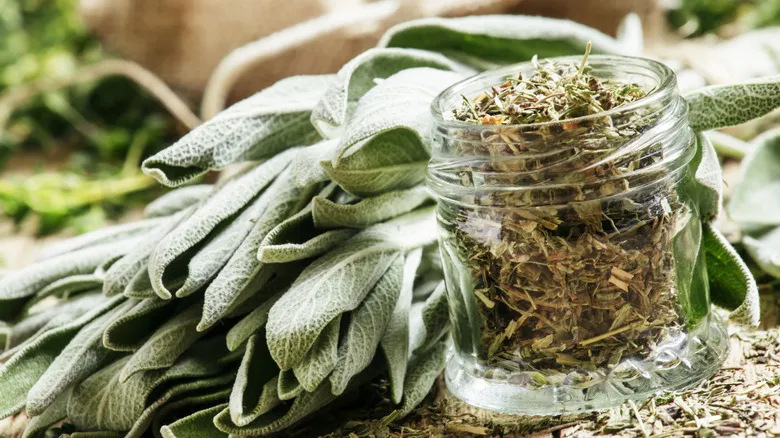
The way you store sage varies based on whether it is fresh or dried. Fresh sage should be refrigerated until you're ready to use it. To maximize its freshness, wash the sage as soon as you bring it home and dry it thoroughly. Trim the bottom inch of the stems, lightly dampen a paper towel, place the herbs on it, and roll it up gently before putting the bundle in a plastic bag. When stored this way, your sage should remain fresh for about a week, though it may last longer; just be sure to discard it if you notice any dark spots, wilting, or mold.
Dried sage should be stored in airtight containers, away from heat, light, and moisture, to preserve its aromatic compounds and flavor. Ensure that your jars have secure lids and clear labels so you can easily identify their contents and replace them when needed. Generally, dried herbs can last for at least a year.
There are also several methods for preserving sage at home. If you purchase it fresh, you can find online instructions for drying it using an oven, microwave, or even in the refrigerator. For sweet or savory uses, you can pack the sage in sugar or salt until it is completely dried. Afterward, remove it, brush off any excess granules, and store it until needed. You can also make sage pesto, chop it and freeze it in ice cube trays with water or olive oil, or prepare sage butter and freeze it for later use.
Substituting for sage

Sage is a distinctly recognizable flavor, whether used fresh or cooked. This makes it challenging to find a suitable substitute, as no single herb can truly mimic its unique blend of earthy, minty, peppery, and citrusy notes. However, there are several alternatives that can work. The choice of substitute depends on the dish and whether you need fresh or dried sage, but you do have options.
Rosemary and thyme are popular substitutes. Ideally, you should replace fresh herbs with fresh ones and dried herbs with dried ones, but you can interchange them if necessary. Just remember the general guideline of using one part dried herb for every three parts fresh herb. Other possible herb substitutes include marjoram, oregano, tarragon, basil, and savory. If you don’t have any of these on hand, an herb blend can also be effective. Poultry seasoning and Italian seasoning are two excellent choices.
Bay leaves can also be used, but they are not suitable for recipes that require fresh sage. Bay leaves are quite tough and need to simmer for an extended period to release their flavors and infuse the dish. They work well in stews, soups, braised meats, or sauces, but should be avoided in quicker-cooking dishes like stuffing.
Health benefits and nutritional information

Sage is packed with numerous volatile compounds that can support a healthy lifestyle. It also provides iron, calcium, phenolic acids, and flavonoids, all of which are advantageous for your well-being. Plus, with just a tablespoon of sage (which is typically sufficient for most recipes) containing only 6 calories, it’s an easy choice to enhance any dish that requires it.
Health enthusiasts should be mindful of the potential side effects of excessive sage consumption. Studies have indicated that high levels of sage can be neurotoxic in animals due to a compound called thujone. While findings from animal research don’t directly translate to human health, it’s important to consider. Experts suggest limiting sage tea intake to no more than three to six cups per day.
When choosing herbs, remember that sage is beneficial for your health. With your doctor’s advice, you can incorporate sage essential oil into your routine for its fragrance or use sage bundles for smudging. However, it’s important to note that neither should be used for cooking, as essential oils are too concentrated and may lead to digestive problems, and smudge bundles often contain additional materials.
Recommended
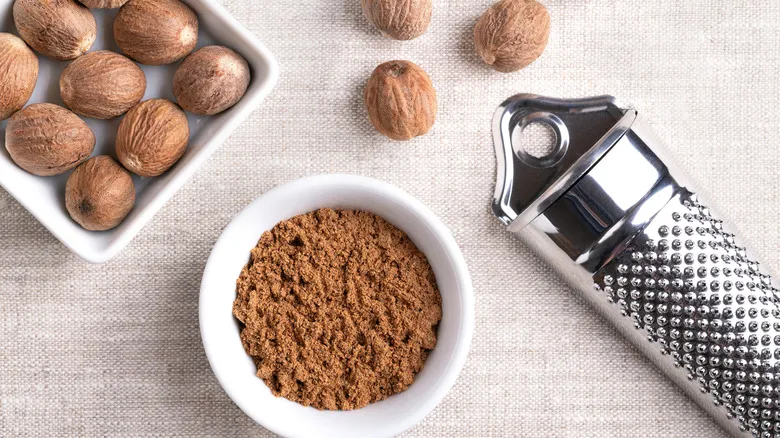
Can Nutmeg Really Make You Hallucinate?
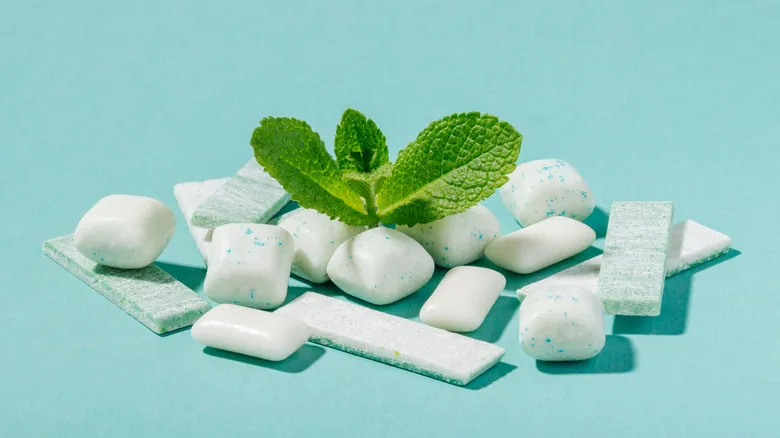
What Is Gum Really Made Of?

What The Paper In Your Pizza Box Is And Why It's In There

Is It Safe To Drink Water With Baking Soda?
Next up

